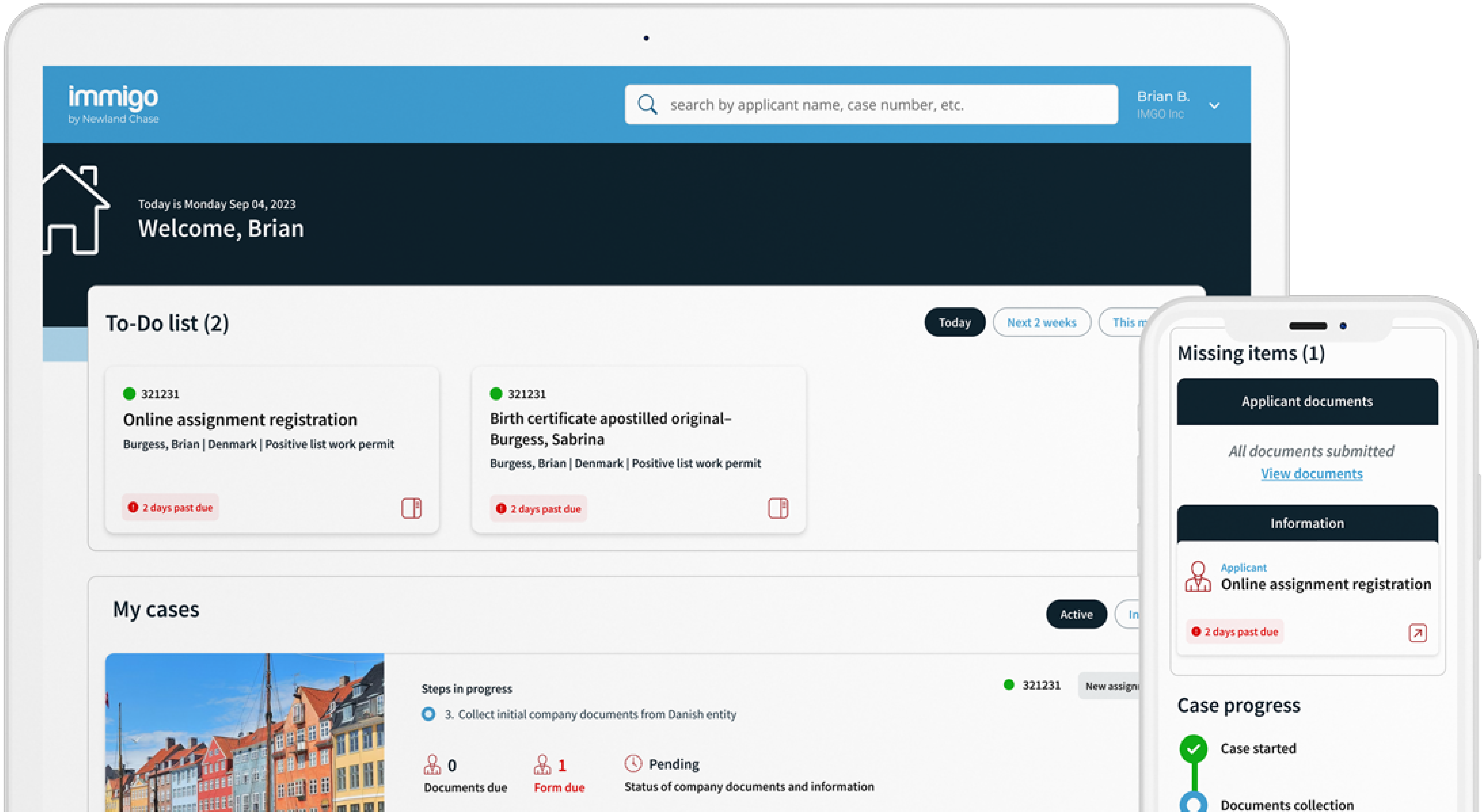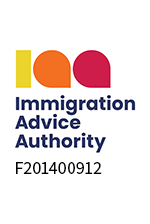Get The Visibility Your Company Needs
Reduce compliance risks and mobility costs while managing individual and project-related travel with ImmiSMART: the solution that unifies your travel and mobility programs.
UK Home Office Webinar Q&A | A First-Hand Exploration of the UK’s New Immigration System
August 26, 2020
Q&A Report Prepared by Newland Chase
Watch On-Demand Webinar Now – UK Home Office Webinar: A First-Hand Exploration of the UK’s New Immigration System
| Q: What is the relationship between the new Skilled Worker and Intra-Company Transfer (ICT) routes and how do they fit together? Will companies that have previously utilised the ICT route for their employees coming to the UK on a temporary assignment be able to use the Skilled Worker route instead? Or can the Skilled Worker route only be used for those being offered a UK employment contract? |
With changes such as the abolition of the Resident Labour Market Test (RLMT) and revised salary thresholds, there is less to distinguish the Skilled Worker and ICT routes. Nonetheless, there are some differences, for example, higher salary thresholds and the requirement to be employed by the overseas entity for the ICT route. The Skilled Worker route can be used for temporary assignments provided all the relevant requirements are met. The Skilled Worker route is primarily intended to be used for workers who are filling UK jobs that arise from skills shortages, whereas the ICT route is for temporary assignments of workers to meet specific business needs.
However, the rules for both routes allow a great deal of flexibility and, provided the requirements are met, the Skilled Worker route can indeed be used for temporary assignments. Be aware that Skilled Workers must be paid at the level required by the rules for the entire duration of their permission (visa) and allowances cannot be counted as part of their pay. Pay for ICTs, on the other hand, can include some allowances, and salary need only be at the level required by the rules when the worker is actually in the UK.
| Q: Will Tier 2 ICT holders currently in the UK be able to switch in-country? |
Yes, it will be permitted to switch into the Skilled Worker route whilst still in the UK if the applicant meets the qualifying requirements for that route.
| Q: What are the changes in relation to the cooling-off rules? |
Rather than having a blanket 12-month cooling-off period, the aim is to achieve the same outcome but through slightly more flexible means. The cooling-off rules will be adjusted for the ICT route, so that an overseas intra-company transferee must not hold entry clearance or leave to enter or remain as an intra-company transferee for more than five years in any six-year period, except where they qualify to be granted up to nine years on the basis of their salary. For example, you could have six months working overseas in one year, six months in another year and make up cooling-off period in stages.
Cooling-off rules apply based on the date when you return to the UK. If you are in the UK presently on an ICT, and are going to apply to come back to the UK under the new system, you will be subject to the cooling-off rules of the new system.
| Q: Although the Resident Labour Market Test (RLMT) has been abolished under the Skilled Worker route, a “genuine vacancy” must be being filled and roles cannot be created to facilitate immigration for a specific migrant. What does this mean in practice and what evidence (if any) will be required to ensure the sponsor remains compliant? |
There are no changes to a genuine vacancy requirement covered under the existing Tier 2 and 5 rules and Guidance for Sponsors. With the abolition of the RLMT, employers will not be required to retain any additional documentary evidence for a genuine vacancy but the Home Office can request additional information for further assessments before approving an application if vacancies are not considered to be genuine.
A genuine vacancy:
- requires the jobholder to perform the specific duties and responsibilities for the job and meets all of the requirements of the Tier and category – if a Certificate of Sponsorship (CoS) has already been assigned, the vacancy must be for the period of employment stated on the CoS.
- does not include dissimilar and/or lower-skilled duties. The Home Office may request additional information and/or evidence from the sponsor or the migrant to establish that this requirement is met, and may refuse the migrant’s application if this is not provided within the Home Office’s deadline.
Examples of vacancies that are not considered to be genuine include (but are not limited to):
- one which contains an exaggerated or incorrect job description to deliberately make it appear to meet the requirements of the Tier and category when it does not.
- a job or role that does not exist in order to enable a migrant to come to, or stay in, the UK.
| Q: What would the position be for employers and employees living in the UK by 31 December 2020 who do not make applications under the EU Settlement Scheme by the 30 June 2021 deadline? |
With just under a year until the deadline, the Government’s focus is to ensure people are aware of the EU Settlement Scheme and to encourage them to apply. Over 3.6 million applications have already been made. Ultimately, by the end of June 2021 all EU, EEA and Swiss nationals living in the UK by 31 December 2020 need to have a status issued under the scheme to access public services, use the NHS etc.
With regards to employers, they are not asked to go back and retrospectively check whether their staff have applied – the onus is on individuals to obtain the status, not on the employer to police that. If employers are hiring anyone after the end of June 2021, they will need to check that EU/EEA nationals have the correct status (this will be a digital status that can be shared with employers). Until the end of June 2021, the checks will remain as they are now, i.e., EU/EEA nationals will be able to present their passports and/or ID cards to confirm their right to work in the UK.
The Home Office has made clear there will be reasonable grounds for people to miss the deadline. The EU Settlement Scheme will be available for a number of years to come. It will be used by people with pre-settled status to apply for settlement status.
| Q: Will time spent in the UK on an ICT count towards qualifying years for Indefinite Leave to Remain (ILR)? |
Time spent on an ICT will not count towards ILR (settlement). If ICT holders switch into other routes, the settlement “clock” will start when they switch into the route that leads to settlement.
| Q: Will the Home Office start accepting applications under the new system from autumn 2020? |
The intention is to open up new routes for EEA and non-EEA nationals under the new rules at the same time, from autumn 2020. Non-EEA nationals will be able to arrive and start working under the new rules immediately. If an employer wants to sponsor a non-EEA national who will be starting work after the new system is going to be introduced, they can assign a Certificate of Sponsorship (CoS) that will still be valid.
There are two possible ways this could be managed. The first is that any applications using Tier 2 CoS will continue to be assessed under Tier 2 rules.
The other approach is that there will be a process to convert Tier 2 CoS into the Skilled Worker CoS and will be assessed under the new rules. Either way, employers will be able to use the same CoS. The Home Office is currently considering which would be the best approach for applicants and sponsors.
EEA nationals can use current free movement rights until 31 December 2020 and apply to the EU Settlement Scheme. If EEA nationals intend to come to the UK to work/study from January 2021, they can apply in advance under the new rules.
| Q: Will there be any additional responsibilities/duties for sponsors under the new system? around compliance? |
Broadly, the requirements will remain the same as they are now. There will be some minor changes, related to tradable points for example. Overall, the intention is to make the system smoother and lighter for sponsors – removing or streamlining duties where possible, rather than adding to them.
| Q: Are there any plans to expand the Tier 5 Youth Mobility route to EEA countries? |
The Tier 5 Youth Mobility route is managed on a reciprocal basis. Any kind of Tier 5 scheme with EU countries will be subject to negotiations.
| Q: Are there any changes to the UK Ancestry route? |
Nationals of Cyprus and Malta will be eligible to apply under the UK Ancestry route from January 2021.
| Q: Will sponsors under the current system need to reapply to become sponsors under the new rules? |
Licenses will be converted to the new routes. Sponsors will not need to reapply unless they wish to add additional categories to their licenses (e.g., if they are not an ICT sponsor now but wish to add ICT to their license).
| Q: How is an ‘acceptable standard’ of English determined? |
The English language requirement for Skilled Workers will be set at B1 (intermediate) level, the same as it is now for Tier 2 (General). Applicants will meet it in the same way they do now.
| Q: Will there be a review of the Shortage Occupation List (SOL)? |
Yes, the Migration Advisory Committee, the independent public body that advises the government on migration issues, is currently carrying out a review and will publish their findings at the end of September 2021.
| Q: How many hours per week does the salary threshold relate to? |
The £25,600 general threshold applies regardless of the number of hours. The going rates for individual occupations are usually based on a 39-hour week (with some differences for occupations relying on public sector pay scales).
| Q: What will be the impact for those on Tier 2 visas which do not expire before 1 January 2021? |
The existing Tier 2 visa will remain valid until it expires. If the individual wises to apply for an extension or change of employment, they will do so under the new system. Transitional arrangements will apply where needed to ensure applicants do not have to face any new requirements (e.g. additional points).
| Q: Would an individual on a Tier 2 ICT be able to apply under the new system without observing a cooling-off period? |
They would need to meet the new cooling-off routes set out in the government’s recent statement – so they would have to not have been in the UK under the Tier 2 ICT route for more than five years in six (unless a higher earner).
| Q: Will there be any changes to dependent visas under the new rules? |
There may be some minor changes (for example, on maintenance funds), but no major changes – those who can bring dependents now will be able to do so under the equivalent categories of the new system.
| Q: Will there be threshold on the contract term of employment for individuals who need visa sponsorship? E.g., would an employer be able to sponsor an individual for six months? Is there a threshold on the number of hours of engagement per week? |
There are no particular thresholds in terms of length of contract or hours per week. The main point to note on hours per week is that the person’s annual salary must still be at least £25,600 per year (less if reduced through tradeable points).
| Q: Have the titles of roles on the Shortage Occupation List been expanded? The list does not contain many commonly used role titles in organisations today. |
The “role titles” are taken directly from the Standard Occupational Classification (SOC) 2010 system developed by the Office for National Statistics (ONS). The Home Office will look to move to the ONS’s newer SOC 2020 system in due course as more data on this system become available. In the meantime, the ONS provides guides to help match particular jobs to the most appropriate SOC code.
| Q: Will an individual need to demonstrate they meet the skills level by producing certification? Will compensatory experience count if the individual doesn’t meet RQFL3? |
It is the skill level of the job which matters. Applicants do not need to hold particular qualifications or experience (unless claiming tradeable points for a relevant PhD).
| Q: Is the cooling-off period still applicable to Tier 2 ICTs? Does an individual need to leave the UK after completing five years in that category? |
If the individual has spent a full five years in the UK in the Tier 2 ICT category, and they are not a higher earner, then yes. They may also apply to switch into another route, if they are eligible. The government’s recent statement set this out:
“We will also adjust the existing “cooling off” rules as they apply to intra-company transfers to ensure the future system makes more flexible provision for shorter-term assignments. We plan to replace the existing rules with a rule that more simply requires that an overseas intra-company transfer must not hold entry clearance or leave to enter or remain as an intra-company transferee for more than five years in any six-year period, except where they qualify to be granted up to nine years on the basis of their salary”.
| Q: For employees unable to leave the UK by 31 July whose visas have expired, is there to be an extension to their leave to remain if it is not possible for them to return to their home country due to travel restrictions? |
The latest guidance is available on gov.uk at this link. Now travel restrictions are lifting globally, individuals will no longer be able to extend their visas automatically on this basis. They are expected to take all reasonable steps to leave the UK where it is possible to do so or apply to regularise their stay in the UK.
| Q: Can an individual on an Ancestry Visa, due to apply for Indefinite Leave to Remain in 2021, still proceed with the new process? If not, what route do they follow for citizenship? |
The UK Ancestry visa will continue in much the same form as it is now. Those on the route will continue to be able to apply for ILR and citizenship as they do now.
| Q: For students who start a Master’s degree programme in September 2020, will they be eligible to stay for two years to look for a job? |
Yes – the new Graduate route will be open for those graduating from summer 2021.
| Q: Will the Immigration Skills Charge of £1000 per year still apply under the new rules? |
Yes, it will still apply (including the discount for small and charitable sponsors).
| Q: How are the going rates for roles determined? Are they published, and do they vary across the UK? |
The rates are based on the Annual Survey for Hours and Earnings (ASHE) data and are published in Annex E of the government’s recent statement. The rates are the same across the UK (with only some variance for occupations using national pay scales).
View as a downloadable PDF
 On-Demand Webinar | UK Home Office Webinar: A First-Hand Exploration of the UK’s New Immigration System
On-Demand Webinar | UK Home Office Webinar: A First-Hand Exploration of the UK’s New Immigration System
Join Newland Chase’s UK Managing Director Tony Butterworth, Minister for Immigration Kevin Foster MP, and UK Home Office representatives Philippa Rouse, Dan Petriello, and Carrie Golding, as they explore the new UK immigration system and the future landscape of the Tier 2 immigration route. Watch now.
This publication is not intended as a substitute for legal advice. Readers are reminded that immigration laws are subject to change. We are not responsible for any loss arising from reliance on this publication. Please contact Newland Chase should you require any additional clarification or case specific advice.




